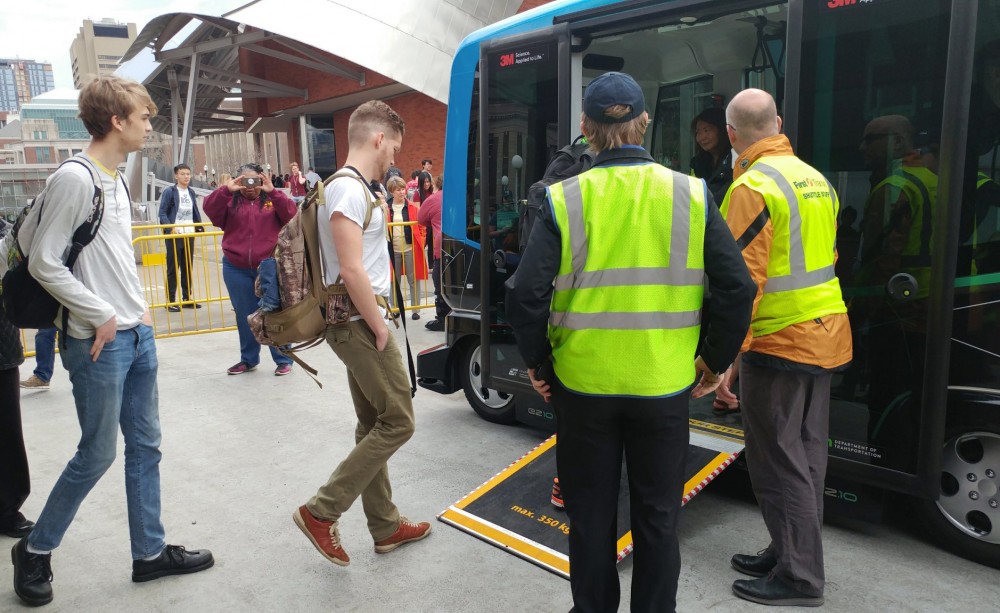A 12-passenger autonomous bus traveled on a pre-mapped route on the Washington Avenue Bridge at the University of Minnesota Monday, allowing passengers to experience self-driving technology.
The Minnesota Department of Transportation has been studying this autonomous bus since December to see how the vehicle responds to winter weather and to different locations, like a college campus.
The bus, which was developed by EasyMile, a French company specializing in driverless technology, partnered with MnDOT and First Transit, the company that runs the University shuttle system on campus.
“We’re doing this because we have a unique opportunity with the autonomous shuttle in town,” said Lisa Raduenz, assistant director of Fleet and Transportation Service at the University.

The EasyMile shuttle is fully electric, has no steering wheel and has a maximum speed of 25 mph. Guided by LIDAR technology, the bus adjusts its speed and can make stops based on its surroundings.
Though the shuttle is autonomous, an operator presses a button to get the bus moving, and has access to a joystick and a stop button in case of emergency.
The six-seat bus is also wheelchair accessible, offers railings for standing passengers and features eight USB charging stations for phones or other devices.
“In ideal weather conditions the bus can run up to 16 hours,” said Paul Buharin, the director of operations at First Transit.
The bus has been tested in conditions as low as minus 23-degree wind chill. During that time, MnDOT found that the battery only lasted six to eight hours, proving a need to adjust the vehicle to colder climates.
For many students, the three-minute trip was their first time in a self-driving vehicle.
“I’ve never been in an autonomous vehicle before, but I know there is a lot of hype around it,” said sophmore Jude Goossens. “It was pretty cool.”
Fifth-year Alex Peeper said he is excited for this type of vehicle and took his first self-driving bus ride Monday afternoon.
“It’s cool, really cool. This is the future,” Peeper said.
The University of Wisconsin-Madison held a similar demo April 24 and 25, and last fall, the University of Michigan-Ann Arbor implemented a route for a 15-passenger autonomous bus.
Frank Douma, the University’s director of the state and local policy program, said the technology could make roads safer.
“First and foremost, this type of technology is designed to not hit people,” Douma said.
This was his second time on the shuttle. His first ride was in December at a MnDOT facility when the shuttle was just learning how to drive through snow.
“It went a lot faster this time. It didn’t have to adjust to the snow,” Douma said.
This type of autonomous bus isn’t made for traditional routes, but for linking riders to the first or last mile of a transit route, Raduenz said.
She added that she hopes the demo is eye-opening to those who use it.
“I hope it is a great educational opportunity for people, and it’s a great way to look at transportation options for the future,” Raduenz said.








